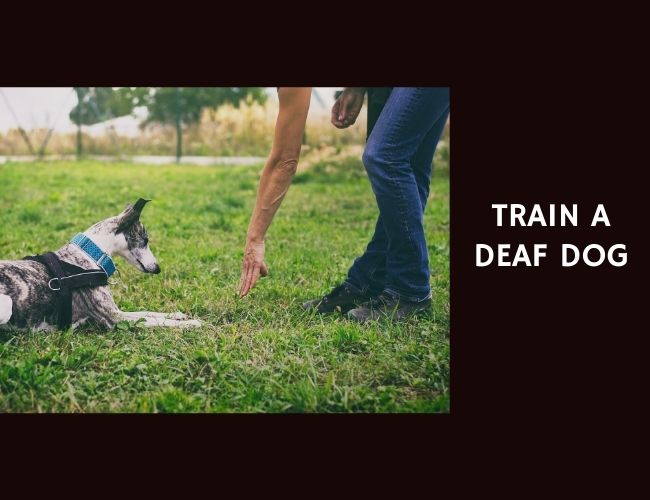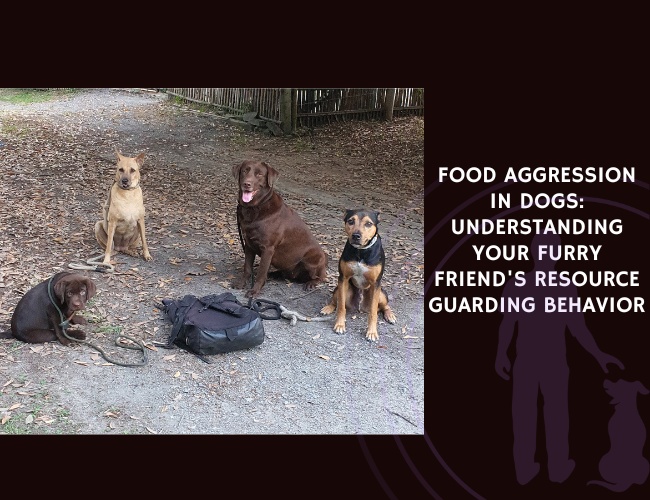Introduction: The Working Terrier with a Heart of Gold
Picture the misty borderlands between England and Scotland, where for centuries, a small but mighty terrier worked alongside farmers and huntsmen. The Border Terrier emerged from this rugged landscape with a spirit as enduring as the stone walls that crisscross their homeland. These remarkable dogs combined the tenacity needed to bolt foxes from their dens with the good nature required to work peacefully alongside hounds.
Today’s Border Terrier carries this rich heritage in every fiber of their being. They’re dogs of fascinating contradictions – small enough to cuddle on your lap yet brave enough to face down any challenge, independent thinkers who nonetheless form deep bonds with their families. Did you know that their unique “otter” coat was specifically developed to protect them from harsh weather while remaining easy for farmers to maintain?
If you’re considering welcoming a Border Terrier into your life, you’re contemplating a partnership with a dog whose motto might well be “game for anything.” Let us guide you through understanding these remarkable companions, from their complex behavioral patterns to their specific care needs. You’ll discover why Border Terrier enthusiasts often say, “Once a Border person, always a Border person.” 🐾
Character & Behavior: Understanding Your Border’s Mind
The Terrier Temperament: Big Dog in a Small Package
Border Terriers possess what behavioral specialists call “emotional resilience” – a stable, confident temperament that helps them navigate life’s challenges with remarkable adaptability. Unlike many small breeds prone to anxiety, your Border Terrier approaches the world with self-assurance that stems from centuries of independent work.
At home, you might notice your Border transforms into a calm, content companion. They’ll happily curl up beside you for an evening of television, their warm body pressed against yours in quiet companionship. Yet this same dog becomes an alert, energetic explorer the moment you step outdoors. This behavioral flexibility reflects their working heritage – relaxed when off-duty, instantly ready for action when needed.
Their confidence manifests in fascinating ways. While they form strong bonds with their families, Border Terriers maintain an independent spirit that sets them apart from more clingy breeds. They love you deeply but won’t shadow your every move. Think of them as the friend who’s always happy to see you but equally content pursuing their own interests.
Prey Drive: Understanding the Hunter Within
Perhaps no aspect of Border Terrier behavior causes more surprise to new owners than their intense prey drive. This isn’t a quirk or training failure – it’s the very essence of what they were bred to be. When that prey drive activates, you’re witnessing centuries of selective breeding in action.
The prey sequence in Border Terriers follows a predictable pattern: searching → stalking → chasing → grabbing → kill-bite. Understanding this sequence helps you predict and manage their behavior. That innocent sniffing during walks? It’s the searching phase. The sudden freeze when they spot a squirrel? That’s stalking beginning. Once the chase starts, their recall becomes unreliable – not because they’re disobedient, but because their neurological wiring prioritizes the hunt.
Managing this drive requires creativity and understanding. You’ll never eliminate it, but you can channel it constructively:
- Flirt poles become your best friend, allowing controlled chase games
- Scent work satisfies their need to hunt without live prey
- Structured fetch provides an outlet for chase behaviors
- Puzzle toys engage their problem-solving instincts
Remember, every plastic bag blowing in the wind, every bird hopping on the ground, every leaf skittering across pavement can trigger this ancient programming. It’s not defiance – it’s DNA.
Social Dynamics: Pack Mentality Meets Terrier Independence
Border Terriers break the typical terrier mold when it comes to social compatibility. Bred to work alongside foxhounds, they possess an unusual (for terriers) ability to coexist peacefully with other dogs. This pack-oriented nature makes them excellent choices for multi-dog households.
With other dogs, your Border displays a fascinating combination of sociability and self-respect. They’re generally friendly and playful, engaging in proper canine communication. However, if challenged or bullied, they won’t back down. It’s this “I’ll be nice until you give me reason not to be” attitude that defines their social style. Early socialization enhances these natural tendencies, helping them develop into well-rounded social butterflies.
Human relationships reveal another layer of their personality. With family members, they’re affectionate without being demanding. Children often become their favorite playmates, though supervision ensures everyone plays nicely. Strangers might receive a different reception – not aggressive, but appropriately cautious. Your Border serves as an excellent alert system, announcing visitors with purposeful barks before warming up once properly introduced.
Small animal compatibility requires honest assessment. That hamster in a cage? Your Border sees a snack, not a friend. Cats can work if raised together from puppyhood, but even then, supervision remains essential. The sight of a running cat can override years of peaceful coexistence in a heartbeat.
The Thinking Terrier: Intelligence with Attitude
Border Terrier intelligence manifests as creative problem-solving combined with selective compliance. They’re not the eager-to-please Golden Retriever who lives for your approval. Instead, they’re the clever student who understands the assignment perfectly but chooses when to complete it.
Their learning style reflects this independence. They’ll quickly grasp new concepts – often faster than you expect. The challenge comes in motivation. A Border Terrier asks “What’s in it for me?” before complying. This isn’t stubbornness (though it may feel like it); it’s pragmatic intelligence. They conserve energy for worthwhile endeavors.
Mental stimulation becomes crucial for these thinking dogs. A bored Border Terrier becomes destructive, not out of spite but from a desperate need to engage their active minds. Rotating puzzle toys, teaching new tricks, and varying walking routes all help satisfy their intellectual needs. You might notice them studying problems, tilting their heads as they work through solutions. This problem-solving process brings them genuine joy.
Behavioral Challenges: Separating Myth from Reality
Many Border Terrier behaviors get mislabeled by owners who don’t understand breed characteristics. What looks like hyperactivity might simply be normal terrier energy lacking appropriate outlets. That “stubbornness” could be independent thinking that needs different motivation.
True behavioral concerns requiring intervention include:
- Excessive barking beyond normal alerting
- Genuine aggression toward people (extremely rare)
- Severe separation anxiety (uncommon in this breed)
- Compulsive behaviors like tail chasing or excessive licking
Most “problems” resolve with proper exercise, mental stimulation, and understanding of breed traits. That destroyed cushion? Probably boredom, not spite. The refusal to come when called? Likely prey drive override, not defiance. Understanding the why behind behaviors helps you address root causes rather than symptoms.
Training & Education: Working with Independent Thinkers
The Art of Engagement: Capturing Terrier Attention
Training a Border Terrier requires understanding their unique engagement patterns. Unlike breeds bred for biddability, Borders approach training as negotiation rather than obedience. Your success depends on making training worth their while.
Attention spans vary dramatically based on motivation and environment. In a quiet room with high-value treats, you might capture 15 minutes of focused attention. Add distractions – a rustling leaf, an interesting smell – and that window shrinks to seconds. This isn’t a flaw; it’s an adaptation that kept their ancestors alive while hunting.
Optimizing training sessions means working with, not against, their nature:
- Keep sessions short (5-10 minutes maximum)
- End before they lose interest, always on success
- Use variety to maintain engagement
- Train in different locations to build generalization
- Incorporate play and “real life” rewards
You’ll notice your Border learns best when they think training is their idea. That moment when they offer a behavior hoping for reward? That’s when real learning happens.
Memory and Learning: The Terrier Database
Border Terriers possess remarkable memory capabilities, particularly for experiences with strong emotional associations. This works both for and against trainers – they remember every success but also every failure or negative experience.
Positive associations stick powerfully. The treat jar rattling, the leash coming out, the car keys jingling – your Border catalogs these environmental cues with impressive accuracy. Use this to your advantage by creating consistent patterns around desired behaviors.
Context-specific learning presents unique challenges. Your Border might perform perfect recalls in the living room but act deaf at the park. This isn’t forgetfulness – it’s how their brains compartmentalize information. Each new environment requires re-teaching commands until they generalize the behavior across contexts.
Working memory during training sessions follows predictable patterns. New behaviors need consistent repetition across multiple sessions before becoming reliable. However, once truly learned, behaviors remain remarkably stable over time. That trick you taught three years ago? A quick reminder session brings it back perfectly.
Positive Reinforcement Strategies: Finding Your Border’s Currency
Success with Border Terriers demands finding what motivates your individual dog. While food ranks high for most, understanding the hierarchy of reinforcers helps maximize training effectiveness.
Food rewards work best when:
- Using tiny, soft pieces they can swallow quickly
- Varying between regular and “jackpot” treats
- Timing delivery within 1-2 seconds of desired behavior
- Fading lures quickly to prevent dependency
Play rewards tap into natural drives:
- Tug games for dogs who love interaction
- Fetch for chase-motivated individuals
- “Find it” games combining food and hunting instincts
- Access to sniffing as environmental reward
The key to sustained success lies in unpredictability. Variable reinforcement schedules – where rewards come intermittently rather than every time – create stronger, more persistent behaviors. Think slot machine psychology: the possibility of reward maintains interest better than guaranteed payout.
Early Socialization: Building a Confident Companion
The critical socialization window (3-14 weeks) shapes your Border’s future temperament profoundly. However, socialization needs continue through adolescence and into adulthood, particularly given their natural wariness of strangers.
People socialization should expose your puppy to:
- Various ages, from babies to elderly
- Different appearances (hats, uniforms, mobility aids)
- Diverse movement patterns and energy levels
- Handling by strangers (with permission)
Environmental socialization prevents fearfulness:
- Urban sounds (traffic, construction, sirens)
- Rural experiences (livestock, wildlife, machinery)
- Different surfaces (metal grates, stairs, water)
- Weather conditions (rain, wind, snow)
The goal isn’t just exposure but positive associations. Quality trumps quantity – one great experience outweighs ten neutral ones. Watch your puppy’s body language, keeping experiences positive and ending before overwhelm occurs.
Boundary Training: Containing the Explorer
Border Terriers earned their reputation as escape artists honestly. Their problem-solving intelligence combined with hunting instincts creates Houdini-like capabilities. Successful containment requires both physical barriers and training.
Physical security starts with understanding their capabilities:
- Can climb chain-link fences using toe holds
- Will dig under barriers with remarkable persistence
- Squeeze through impossibly small gaps
- Open gate latches with practice
Training approaches that build boundary respect:
- “Wait” at all doors becomes non-negotiable
- Boundary games rewarding staying within limits
- Mat training for designated safe zones
- Long-line work building distance control
Never rely solely on training for containment. Even well-trained Borders can’t resist sufficiently tempting prey. Consider GPS trackers for added security – not because you expect escape, but because preparation prevents heartbreak.

Nutritional Needs: Fueling Your Active Companion
Understanding Border Terrier Metabolism
Border Terriers possess surprisingly efficient metabolisms, a trait that served their ancestors well during long hunting days with uncertain meals. This efficiency, however, creates challenges in our modern world of abundant food and treats.
Caloric needs vary significantly based on life stage and activity level. Your growing Border puppy needs roughly 55-60 calories per pound of body weight – fuel for both daily activities and rapid development. Adult Borders typically require 35-40 calories per pound, though highly active individuals may need up to 50. These aren’t just numbers; they’re guidelines that require adjustment based on your dog’s individual metabolism and body condition.
Seasonal variations affect appetite and energy needs more than many owners realize. You might notice increased hunger during fall months – an ancestral preparation for winter scarcity. Spring often brings decreased appetite as activity levels rise. Working with these natural rhythms rather than against them supports optimal health.
The efficiency trap means Border Terriers gain weight easily on standard feeding amounts. What seems like a reasonable portion for a 15-pound dog might create a 20-pound dog within months. This isn’t greediness – it’s biological programming to store energy when available.
Protein Requirements: Building and Maintaining the Athletic Terrier
Quality protein forms the foundation of Border Terrier nutrition, supporting their active lifestyle and maintaining the lean muscle mass that defines their athletic build.
Optimal protein levels range from 25-30% of dry matter for active adults. This isn’t just about quantity – protein quality matters enormously. Named meat sources (chicken, lamb, fish) should lead ingredient lists, providing complete amino acid profiles. Meat meals offer concentrated protein but require careful sourcing to ensure quality.
Life stage considerations adjust these requirements:
- Puppies need 28-32% protein for proper development
- Senior Borders benefit from 25-28% to combat muscle loss
- Working or highly active dogs may require up to 35%
The protein-behavior connection often surprises owners. Adequate protein helps stabilize blood sugar, potentially moderating prey drive intensity. Dogs with sufficient protein show better impulse control and sustained energy rather than peaks and crashes. Consider this when choosing foods – that budget kibble might cost more in training challenges.
Weight Management: Preventing the Border Bowling Ball
The jolly, rotund Border Terrier might look cute, but excess weight seriously impacts health and longevity. With 7% of the breed affected by obesity, weight management requires vigilance.
Ideal body condition means:
- Ribs easily felt with light pressure (not visible)
- Clear waist viewed from above
- Visible abdominal tuck from the side
- No fat deposits over spine or tail base
Feeding strategies that support healthy weight:
- Measured meals twice daily (never free-feed)
- Treats count toward daily calories (maximum 10%)
- Puzzle feeders slow consumption and add activity
- Green beans or carrots provide low-calorie bulk
The social challenge comes from those expressive eyes. Border Terriers excel at looking perpetually starving, even immediately after meals. Remember: you’re not being cruel by maintaining proper portions – you’re adding years to their life. Studies show lean dogs live 1.8 years longer than overweight ones.
Dental Health Through Diet: More Than Just Clean Teeth
Periodontal disease affects 17.6% of Border Terriers – a sobering statistic that makes dental health a nutritional priority. The connection between diet and dental health extends beyond mechanical cleaning.
Dietary strategies supporting dental health:
- Appropriately sized kibble encouraging chewing
- Dental-specific foods with specialized shapes
- Raw bones under supervision (never cooked)
- VOHC-approved dental chews daily
The systemic connection links dental health to overall wellness. Bacteria from periodontal disease enter the bloodstream, potentially affecting heart, kidneys, and liver. That daily dental chew isn’t just freshening breath – it’s potentially adding years to your Border’s life.
Avoid dietary pitfalls:
- Sticky treats adhering to teeth
- High-sugar foods feeding bacterial growth
- Exclusively soft diets without dental care
- Table scraps disrupting oral pH balance
Supplements and Special Considerations
Modern Border Terriers benefit from targeted nutritional support addressing breed-specific concerns and supporting optimal health throughout life stages.
Core supplements for most Border Terriers:
- Omega-3 fatty acids (30mg EPA/DHA per pound): Reduces inflammation, supports skin health, may moderate allergic responses
- Glucosamine/chondroitin: Start preventatively by age 2-3, supporting joint health before problems develop
- Probiotics: Maintains gut health, particularly important for Borders prone to dietary sensitivities
Breed-specific considerations require special attention:
- CECS (Spike’s Disease) management often requires gluten-free diets
- Food allergies affect many Borders – novel protein or hydrolyzed diets may help
- Avoid high-oxalate foods if CECS is suspected
- Maintain consistent diets to prevent GI upset
Quality matters more than quantity with supplements. That bargain joint supplement might contain insufficient active ingredients to provide real benefit. Work with your veterinarian to choose evidence-based products at therapeutic doses.
Health & Wellness: Keeping Your Border Thriving
Understanding CECS: The Border Terrier’s Unique Challenge
Canine Epileptoid Cramping Syndrome (CECS), also called Spike’s Disease, represents one of the most perplexing conditions affecting Border Terriers. Unlike typical seizures, dogs experiencing CECS episodes remain fully conscious – a characteristic that both aids diagnosis and increases owner distress.
Recognition remains crucial for proper management. Episodes can last from seconds to two hours, with symptoms including:
- Muscle cramping and inability to stand
- Back arching and stretching
- Visible abdominal pain
- Intestinal gurgling (borborygmi)
- Trembling without loss of consciousness
The dietary connection offers hope where medications often fail. Approximately 50% of affected dogs show improvement on gluten-free diets, though strict adherence proves essential. This isn’t a casual dietary preference – it’s medical management requiring the same diligence as administering medication. Even small amounts of gluten can trigger episodes in sensitive dogs.
Living with CECS means becoming an expert observer. Keep detailed logs of episodes, noting potential triggers like stress, dietary changes, or environmental factors. This information helps veterinarians tailor management strategies to your individual dog. Many owners find that once dietary management is established, their Borders live normal, active lives between rare episodes.
Allergies and Sensitivities: The Itchy Truth
Border Terriers frequently battle allergic conditions, with both environmental and food allergies creating challenges for owners seeking to keep their companions comfortable.
Atopic dermatitis typically emerges between 1-3 years of age, manifesting as:
- Persistent paw licking and chewing
- Ear infections and head shaking
- Belly and groin irritation
- Seasonal or year-round symptoms
Food allergies present differently than many owners expect. Rather than immediate reactions, symptoms develop over time:
- Chronic ear infections despite treatment
- Persistent loose stools or gas
- Skin issues unresponsive to environmental management
- Year-round symptoms without seasonal variation
Management strategies require patience and systematic approaches:
- Elimination diets lasting 8-12 weeks for food allergies
- Environmental modifications (HEPA filters, frequent washing)
- Omega-3 supplementation at therapeutic doses
- Medications like Apoquel or Cytopoint for severe cases
- Regular bathing with appropriate shampoos
The key lies in identifying triggers through careful observation and systematic elimination. That expensive allergy test might provide clues, but real-world elimination trials often prove more reliable.
Joint Health: Supporting the Active Terrier
While Border Terriers escape many orthopedic issues plaguing larger breeds, their active nature and genetic tendencies create specific concerns requiring proactive management.
Luxating patellas (kneecaps that slip out of place) affect many small breeds, including Borders:
- Grades range from 1 (occasional luxation) to 4 (permanent displacement)
- Early detection through regular veterinary exams
- Conservative management for mild cases
- Surgical intervention for severe grades
Prevention strategies support long-term joint health:
- Maintain ideal body weight (every extra pound stresses joints)
- Appropriate exercise avoiding repetitive high-impact activities in youth
- Joint supplements started preventatively
- Swimming provides excellent low-impact conditioning
- Regular moderate exercise maintains muscle support
Age-appropriate exercise matters more than many realize. Those enthusiastic puppy leaps might look cute, but developing joints need protection. The “5 minutes per month of age” rule provides safe guidelines – a 4-month puppy needs 20-minute walks, not hour-long hikes.
Periodontal Disease: The Silent Health Thief
With 17.6% of Border Terriers affected by periodontal disease, dental health demands serious attention. This isn’t just about fresh breath – it’s about preventing systemic health impacts that can shorten lifespan by 1-3 years.
The progression follows predictable stages:
- Plaque accumulation (reversible with care)
- Gingivitis development (still reversible)
- Periodontitis (irreversible damage begins)
- Tooth loss and bone deterioration
Daily prevention makes the difference:
- Tooth brushing remains the gold standard
- Start slowly, building positive associations
- Use enzymatic toothpaste designed for dogs
- Focus on outer surfaces where plaque accumulates
- Consistency matters more than perfection
Professional intervention supplements home care:
- Annual dental examinations
- Professional cleanings under anesthesia
- Dental radiographs revealing hidden problems
- Extractions when necessary for comfort
- Post-procedure care preventing recurrence
Many owners resist anesthetic procedures, but modern protocols make dental cleanings very safe. The risks of untreated dental disease far exceed anesthetic concerns in healthy dogs.
Genetic Health and Longevity Factors
Responsible breeding and health screening contribute to Border Terrier longevity, with median lifespans reaching 12.7 years and many individuals living 15-17 years with proper care.
Essential health screenings for breeding dogs include:
- SLEM (Spongiform Leukoencephalomyelopathy) DNA testing
- Hip and elbow evaluations
- Patella examinations
- Cardiac assessments
- Eye certifications
Other health considerations emerging in the breed:
- Cushing’s disease in older dogs (hormonal imbalance)
- Gallbladder mucoceles requiring monitoring
- Mitral valve disease in seniors
- Various cancers affecting aging Borders
Longevity factors within owner control:
- Maintaining lean body condition throughout life
- Regular preventive veterinary care
- Mental stimulation preventing cognitive decline
- Appropriate exercise adjusted for life stage
- Stress management and environmental enrichment
- Quality nutrition supporting immune function
Your Border’s genetics provide the foundation, but your management decisions significantly impact how those genes express throughout their lifetime. 🧡
Wired. Witty. Wild.
Your Border Terrier thinks before they obey.
This isn’t a dog bred to follow — it’s a dog bred to decide. Every command is met with calculation, curiosity, and a healthy dose of independence that demands training grounded in respect, not repetition.
Their prey drive is ancient and alive.
A squirrel isn’t a distraction — it’s destiny. Inside every leaf chase and sudden sprint is the echo of foxhunts long past, and training must work with that fire, not against it.



Boredom is their biggest enemy.
When the mind idles, mischief begins. Engage their brain, challenge their instincts, and you’ll find a loyal partner who’s always two steps ahead — and never where you last left them.
Exercise & Mental Stimulation: Meeting Their Needs
Physical Exercise: More Than Just Walks
Border Terriers require exercise programs that address both their physical stamina and their psychological need for purposeful activity. Simply walking around the block won’t satisfy these working dogs.
Daily exercise requirements change with life stages:
- Puppies: Follow the 5-minute rule religiously
- Adults: 60-90 minutes of varied activity
- Seniors: 30-60 minutes adjusted for comfort
Exercise variety prevents boredom and provides comprehensive conditioning:
- Leash walks: Build foundation fitness and provide sniffing opportunities
- Fetch games: Satisfy chase instincts in controlled settings
- Swimming: Excellent for joint-friendly conditioning
- Hiking: Ideal for mental and physical stimulation
- Agility training: Combines physical and mental challenges
The quality versus quantity debate resolves easily with Border Terriers – they need both. A two-hour leash walk provides less satisfaction than 30 minutes combining training, play, and exploration. Think about exercise as meeting psychological needs, not just burning calories.
Mental Enrichment: Feeding the Border Brain
Mental fatigue often exhausts Border Terriers more effectively than physical exercise alone. These intelligent dogs require regular cognitive challenges to prevent destructive behaviors born from boredom.
Daily mental stimulation should include:
- Training sessions (5-15 minutes, 2-3 times daily)
- Puzzle toys rotated to maintain novelty
- Scent work games utilizing natural abilities
- Novel experiences and environments
- Problem-solving opportunities
Scent work deserves special mention for Border Terriers. Their hunting heritage makes nose games particularly satisfying:
- Hide treats or toys for searching
- Create scent trails in the yard
- Teach formal scent discrimination
- Use snuffle mats for meal times
Environmental enrichment transforms ordinary spaces into mental playgrounds:
- Cardboard boxes become destruction toys
- Different textures provide sensory experiences
- Rotating toy access maintains interest
- DIY puzzles from household items
You’ll know mental needs are met when your Border settles contentedly after activities rather than seeking additional stimulation. That satisfied sigh as they curl up? That’s the sound of a fulfilled terrier.
Channeling Prey Drive Constructively
Rather than fighting your Border’s prey drive, successful owners learn to redirect it into appropriate outlets that satisfy instincts without endangering wildlife (or your relationship).
Structured activities that satisfy hunting instincts:
- Flirt pole work: Controlled chase and catch
- Barn Hunt: Sport designed for terrier instincts
- Earthdog trials: Breed-specific underground work
- Lure coursing: Sighthound sport adapted for terriers
- Treibball: Urban herding using exercise balls
DIY prey drive games require minimal equipment:
- Tie toys to fishing poles for chase games
- Create “prey” from fake fur and squeakers
- Use remote control toys for unpredictable movement
- Set up tunnels and hiding spots in the yard
The key principle remains consistency – provide appropriate outlets before your Border creates their own. A satisfied prey drive is a manageable prey drive. Those daily flirt pole sessions might save your local squirrel population while keeping your Border physically and mentally satisfied.
Age-Appropriate Activity Adjustments
Border Terrier exercise needs evolve throughout life, requiring thoughtful adjustments to maintain health while meeting activity requirements.
Puppy considerations (up to 18 months):
- Protect developing joints from repetitive stress
- Focus on varied surfaces and experiences
- Emphasize training and socialization over endurance
- Allow self-directed play with appropriate rest
Adult maintenance (18 months – 8 years):
- Peak activity period requiring maximum stimulation
- Combine endurance and sprint-type activities
- Introduce dog sports if interested
- Monitor for signs of overexertion
Senior modifications (8+ years):
- Maintain activity while respecting limitations
- Shorter, more frequent exercise sessions
- Low-impact activities like swimming
- Increased emphasis on mental stimulation
The goal throughout life remains meeting needs while preventing injury. Your 12-year-old Border might not hike five miles anymore, but they still need purposeful activity. Adaptation, not retirement, keeps senior Borders thriving.

Living with a Border Terrier: Daily Life Considerations
Creating a Border-Friendly Home Environment
Living successfully with a Border Terrier means understanding their needs and adapting your environment accordingly. These adaptable dogs can thrive anywhere from city apartments to rural farms, provided their specific requirements are met.
Indoor considerations for Border comfort and safety:
- Secure windows and balconies (prey drive makes heights dangerous)
- Dog-proof lower cabinets containing food or chemicals
- Comfortable resting spots away from high-traffic areas
- Interactive toys accessible for independent play
- Temperature control (they’re hardy but appreciate comfort)
Outdoor security cannot be overemphasized:
- Minimum 6-foot fencing, preferably with underground barriers
- Regular fence inspections for dig spots or climb points
- Secure gate latches (consider carabiner clips)
- Supervised outdoor time until escape-proofing proven
- Consider motion sensors for added security
Environmental enrichment transforms houses into Border-friendly homes:
- Rotation stations for toys and activities
- Window perches for neighborhood watching
- Designated digging areas (sandbox or specific garden spot)
- Indoor agility equipment for rainy days
- Quiet retreat spaces when overwhelmed
Your Border doesn’t need luxury – they need security, stimulation, and companionship. The fanciest dog bed means nothing compared to a secure yard and engaged owner.
Daily Routines That Work
Border Terriers thrive on predictable routines that meet their physical and mental needs while accommodating modern life demands.
A typical day might include:
- Morning: 30-45 minute walk with training intervals
- Breakfast: Puzzle feeder or training session
- Mid-morning: 10-minute play or training break
- Lunch: Quick potty break and interaction
- Afternoon: Mental stimulation (puzzle toy, scent work)
- Evening: Main exercise session (45-60 minutes)
- Dinner: Food-dispensing toy
- Night: Calm interaction, grooming, settling routine
Weekend adjustments allow for longer adventures:
- Extended hikes or new environments
- Dog sport training or competitions
- Socialization opportunities
- Grooming and maintenance tasks
- Preparation for upcoming week
The flexibility factor matters because life happens. Your Border can adapt to schedule changes if core needs are met. Miss the morning walk? Evening activities can compensate. The key lies in meeting daily quotas for exercise and stimulation, not rigid scheduling.
Managing Multi-Pet Households
Border Terriers’ pack heritage makes them suitable for multi-pet homes, though success requires thoughtful management and realistic expectations.
Dog-to-dog dynamics generally work well:
- Borders often prefer canine companionship
- Size differences rarely intimidate them
- Pack hierarchy establishes naturally
- Supervised introductions ensure success
- Resource management prevents conflicts
Cat coexistence requires careful consideration:
- Raise together from puppyhood for best results
- Never leave unsupervised regardless of history
- Provide cat escape routes (vertical space)
- Manage prey drive through training and outlets
- Accept that some Borders cannot live with cats
Small pet safety demands absolute vigilance:
- Secure housing for rabbits, guinea pigs, birds
- Never allow direct interaction
- Manage scent exposure (can trigger prey drive)
- Consider small pets’ stress levels
- Have honest conversations about compatibility
Success in multi-pet households comes from management, not wishful thinking. Your Border might adore your cat, but instinct can override training in triggered moments.
Travel and Adventure with Your Border
Border Terriers make excellent travel companions, their adaptable nature and compact size opening doors to adventures many dogs cannot enjoy.
Car travel success strategies:
- Secure restraint systems (crate or harness)
- Build positive associations gradually
- Never leave unattended (escape artists!)
- Pack familiar items for comfort
- Plan for regular exercise breaks
Accommodation considerations:
- Research pet-friendly options thoroughly
- Bring crates for security in new spaces
- Pack extra cleaning supplies
- Maintain exercise routines despite travel
- Consider escape risks in unfamiliar areas
Adventure activities perfect for Borders:
- Hiking and backpacking (with proper conditioning)
- Camping (secure tent zippers!)
- Beach trips (monitor around water)
- Agritourism and farm stays
- Dog-friendly attractions and events
The key to successful Border adventures lies in preparation and realistic expectations. Your terrier’s enthusiasm might exceed their judgment, making your vigilance essential for safety.
Grooming & Care: Maintaining the Otter Coat
Understanding the Border Terrier Coat
The Border Terrier’s distinctive coat earned them the “otter” descriptor, and understanding its unique properties helps maintain both appearance and function.
Coat characteristics that define the breed:
- Harsh, wiry outer coat repels dirt and water
- Soft, dense undercoat provides insulation
- Natural oils protect skin and coat health
- Minimal shedding compared to many breeds
- Self-cleaning properties when properly maintained
The functional coat serves purposes beyond appearance:
- Protection from harsh weather
- Shield against underbrush and thorns
- Temperature regulation in all seasons
- Natural pest resistance
- Identity maintenance (correct coat = correct breed type)
Seasonal variations affect coat condition:
- Spring and fall see increased undercoat shedding
- Summer coats may appear lighter and thinner
- Winter brings fuller, more protective coverage
- Hormonal changes (especially in females) impact texture
Understanding these natural cycles helps you differentiate between normal changes and potential health issues affecting coat quality.
Hand-Stripping: Art and Science
Hand-stripping maintains the Border Terrier’s correct coat texture, though many pet owners find the process daunting. Understanding the technique demystifies this traditional grooming method.
The stripping process involves:
- Plucking dead outer coat hairs by hand
- Working in sections for even results
- Timing sessions with natural coat cycles
- Using proper tools (stripping knives, finger cots)
- Maintaining steady rhythm and pressure
Benefits of hand-stripping:
- Maintains correct harsh texture
- Promotes healthy skin through stimulation
- Reduces shedding between sessions
- Preserves natural coat colors
- Prevents matting and skin issues
Alternative approaches for pet owners:
- “Rolling” the coat (continuous partial stripping)
- Carding to remove undercoat
- Clipping (changes texture but acceptable for pets)
- Professional grooming every 3-4 months
- Combination approaches based on lifestyle
The decision between hand-stripping and clipping often comes down to owner commitment and dog tolerance. Both can maintain healthy, attractive pets when done properly.
Regular Maintenance Routines
Beyond major grooming sessions, Border Terriers need consistent maintenance to stay healthy and comfortable.
Weekly requirements:
- Thorough brushing to prevent matting
- Ear checks and cleaning if needed
- Nail inspection and trimming
- Teeth brushing (ideally daily)
- Overall health assessment
Monthly tasks:
- Deep coat conditioning if needed
- Anal gland expression (if not self-maintaining)
- Detailed nail care including dewclaws
- Skin fold cleaning if applicable
- Flea and tick prevention application
Seasonal considerations:
- Extra undercoat removal in shedding seasons
- Paw protection in winter (salt, ice)
- Increased bathing during allergy season
- Sun protection for thinly coated areas
- Burr and seed removal after outdoor adventures
Consistency in grooming routines helps identify health issues early while maintaining your Border’s comfort and appearance.
Bathing and Skin Care
Border Terriers require less frequent bathing than many breeds, thanks to their self-cleaning coats. However, modern life sometimes demands intervention.
Bathing guidelines:
- Every 2-3 months for most Borders
- Use gentle, pH-appropriate shampoos
- Thorough rinsing prevents skin irritation
- Condition sparingly to maintain texture
- Complete drying prevents hot spots
Skin health indicators:
- Pink, supple skin without redness
- No excessive scratching or licking
- Clear ears without odor or discharge
- Even coat growth without patches
- Absence of flakes or greasiness
Special circumstances requiring adjusted care:
- Allergic dogs may need weekly medicated baths
- Skin fold dermatitis requires targeted cleaning
- Post-adventure baths remove environmental allergens
- Senior dogs might need gentler products
- Medical conditions dictate specific protocols
Remember that over-bathing strips natural oils, potentially creating the skin problems you’re trying to prevent. Less is often more with Border grooming.
Border Terriers and Family Life
Children and Border Terriers: Building Beautiful Bonds
Border Terriers often excel as family dogs, their sturdy build and playful nature making them natural companions for children. However, success requires understanding and management from adults.
Age-appropriate interactions:
- Toddlers: Always supervised, teaching gentle touch
- Preschoolers: Learning respect for dog’s space
- School-age: Can participate in training and care
- Teens: Often become primary caretakers and trainers
Teaching mutual respect:
- Dogs need quiet spaces away from children
- Children must respect food, toys, and sleeping dogs
- Establish rules before problems develop
- Model appropriate interaction constantly
- Involve children in positive training
Border-specific considerations with kids:
- Herding instincts may manifest as nipping
- High energy matches active children well
- Size prevents accidental injury to dog
- Patience with children typically excellent
- May become protective of “their” children
The magic happens when children and Borders grow together, forming bonds that last lifetimes. Your guidance shapes these relationships from the beginning. 🐾
Senior Life: Caring for Your Aging Border
Border Terriers often age gracefully, maintaining spunk well into their senior years. Understanding aging helps you support your companion through this life stage.
Physical changes to monitor:
- Decreased stamina and mobility
- Vision and hearing changes
- Dental issues requiring attention
- Weight gain from reduced activity
- Arthritis development
Adaptation strategies for senior comfort:
- Shorter, more frequent walks
- Ramps for furniture access
- Orthopedic bedding
- Raised food bowls
- Non-slip surfaces
Mental changes requiring support:
- Cognitive dysfunction signs
- Increased anxiety or confusion
- Sleep pattern disruptions
- House-training lapses
- Behavioral changes
Quality of life considerations:
- Pain management protocols
- Modified exercise routines
- Increased veterinary monitoring
- Dietary adjustments
- Environmental modifications
Your senior Border gave you their best years – now it’s time to return that devotion with thoughtful care adjustments.
The Border Terrier Community
Joining the Border Terrier community enriches ownership experiences through shared knowledge and camaraderie.
Breed-specific resources:
- National breed clubs offering education
- Regional Border Terrier groups
- Online forums and social media groups
- Breed-specific rescue organizations
- Mentorship from experienced owners
Activities bringing owners together:
- Earthdog trials and barn hunts
- Terrier racing and agility
- Conformation showing
- Therapy dog work
- Hiking and adventure groups
The value of community extends beyond social aspects:
- Health information sharing
- Training tip exchanges
- Breeding referrals
- Emergency support networks
- Celebration of breed quirks
Finding your tribe within the Border Terrier world adds dimensions to ownership you might never have imagined.
Conclusion: Is a Border Terrier Right for You?
After exploring the complexities and joys of Border Terrier ownership, the ultimate question remains: is this spirited terrier your ideal companion?
You’ll thrive with a Border if you:
- Enjoy active, outdoor lifestyles
- Appreciate independent thinking
- Commit to secure fencing and vigilance
- Want a dog who’s affectionate but not clingy
- Can provide consistent mental stimulation
- Accept prey drive as unchangeable
- Value loyalty and companionship
Consider other breeds if you:
- Want immediate, unquestioning obedience
- Have unavoidable small pet commitments
- Prefer sedentary lifestyles
- Need an off-leash hiking companion
- Lack secure outdoor spaces
- Want a lap dog exclusively
- Expect to eliminate instinctive behaviors
The Border Terrier promise is one of adventure, laughter, and unwavering companionship. These dogs bring joy through their contradictions – tough yet tender, independent yet devoted, serious workers yet playful companions. They’ll frustrate you with their selective deafness, then melt your heart with their expressive eyes.
Living with a Border Terrier means accepting their whole package – the escapologist who cuddles sweetly, the hunter who plays gently with children, the independent thinker who bonds deeply with their people. It’s a partnership requiring understanding, patience, and humor.
For those who embrace their nature, Border Terriers reward with loyalty extending beyond measure. They’ll share your adventures, guard your home, make you laugh, and occasionally make you question your sanity. But at day’s end, when that scruffy face rests contentedly beside you, you’ll understand why Border people say, “Once a Border person, always a Border person.”
The journey with a Border Terrier isn’t always easy, but for the right person, it’s absolutely worth every muddy pawprint, every escaped chicken chase, and every stubborn standoff. These remarkable dogs don’t just live with you – they become woven into the very fabric of your life, creating memories and bonds that last a lifetime. 🧡










